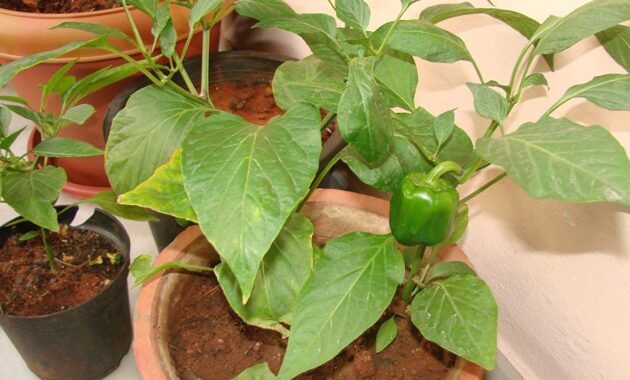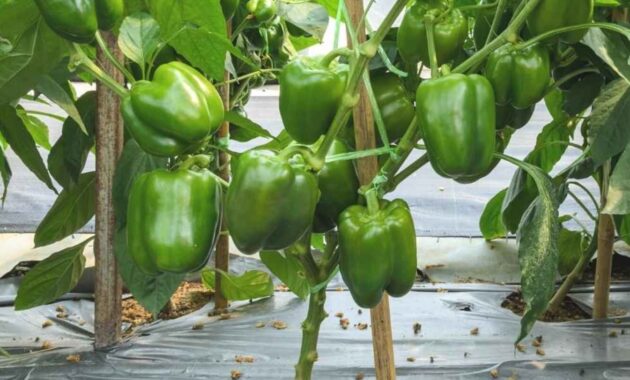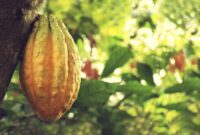
The Capsicum plant, commonly known as the pepper plant, is a versatile and easy-to-grow addition to any home garden. Whether you’re looking to spice things up with some hot chilies or enjoy the sweet taste of bell peppers, capsicums come in a variety of shapes, colors, and heat levels. In this guide, we’ll explore everything you need to know about growing and caring for capsicum plants, from seed to harvest.
Key Characteristics of the Capsicum Plant
Capsicum plants belong to the Solanaceae family, which also includes tomatoes, potatoes, and eggplants. Here are some of the most notable characteristics:
| Feature | Description |
|---|---|
| Scientific Name | Capsicum spp. (various species and cultivars) |
| Common Names | Bell pepper, chili pepper, sweet pepper, hot pepper |
| Plant Type | Annual (in temperate climates), perennial (in tropical climates) |
| Size | Varies depending on variety; can grow between 1 to 4 feet tall |
| Leaves | Oval, slightly serrated, and bright green in color |
| Flowers | Small, white, star-shaped flowers |
| Fruit | Fleshy, hollow fruits in various colors (green, red, yellow, orange, purple) and shapes |
Capsicums are prized not only for their culinary uses but also for their vibrant colors and the range of flavors, from mild and sweet to fiery hot.
Popular Varieties of Capsicum
One of the best things about capsicum plants is their incredible diversity. Here are some of the most common varieties you’ll encounter:
- Bell Peppers (Capsicum annuum)
- Mild, sweet flavor.
- Common colors include green, red, yellow, and orange.
- Jalapeño Peppers (Capsicum annuum)
- Medium heat, often used in Mexican cuisine.
- Best harvested when green, though they can ripen to red.
- Habanero Peppers (Capsicum chinense)
- Extremely hot, often used in spicy sauces.
- Typically orange or red when ripe.
- Cayenne Peppers (Capsicum annuum)
- Long, thin, and very hot, perfect for drying and grinding into powder.
- Commonly bright red.
- Poblano Peppers (Capsicum annuum)
- Mild heat, often roasted and used in sauces.
- Usually harvested when dark green but can ripen to red.
Growing Capsicum: Step-by-Step Guide
1. Choosing the Right Location
Capsicums love sunlight, so choose a location in your garden or home where they will receive 6-8 hours of direct sunlight per day.
- Outdoor: Pick a sunny spot with well-drained soil.
- Indoor: If you’re growing indoors, place your capsicum near a bright window or use grow lights.
2. Soil Preparation
Capsicums thrive in rich, well-drained soil with a pH between 6.0 and 7.0. Before planting, amend your soil with organic compost or well-rotted manure to improve fertility and drainage.
- Soil Type: Loamy soil works best.
- Fertilizer: Add balanced fertilizer (e.g., 10-10-10) to encourage healthy growth.
3. Planting Capsicum Seeds
Capsicum plants are usually started from seeds. Here’s how to get your seeds off to a strong start:
- Seed Starting Indoors:
- Start seeds indoors 8-10 weeks before the last frost date.
- Plant seeds 1/4 inch deep in seed-starting trays or pots filled with seed-starting mix.
- Keep the soil warm (around 70-80°F) and moist to encourage germination.
- Seeds typically germinate in 7-14 days.
- Transplanting:
- Transplant seedlings outdoors after all danger of frost has passed and the soil has warmed.
- Space plants 18-24 inches apart, as they need room to grow.
4. Watering and Feeding
Capsicum plants need regular watering, but be careful not to overwater. Keep the soil consistently moist but not soggy.
- Watering: Water deeply once or twice a week, depending on weather conditions.
- Feeding: Once plants are established, feed them with a balanced fertilizer every 4-6 weeks or use organic compost to nourish the soil.
5. Pruning and Maintenance
Pruning can help promote bushier growth and improve air circulation around the plants. Remove any yellowing or damaged leaves regularly.
- Support: Taller varieties may require staking or cages to keep them upright.
- Mulching: Apply a layer of mulch around the base of the plant to retain moisture and prevent weeds.
Common Problems and Solutions
1. Pests
Capsicum plants can fall prey to a variety of pests, including:
- Aphids: Small, sap-sucking insects that can stunt plant growth. Spray with insecticidal soap or use neem oil.
- Spider Mites: Tiny pests that leave fine webbing and cause yellowing of leaves. Increase humidity and use insecticidal soap to control infestations.
- Whiteflies: These can be controlled by using sticky traps or spraying the plants with neem oil.
2. Diseases
Capsicums are also susceptible to certain diseases:
- Blossom End Rot: Caused by calcium deficiency or uneven watering. Ensure consistent watering and add calcium to the soil if needed.
- Bacterial Leaf Spot: This shows up as dark, water-soaked spots on the leaves. Remove affected leaves and avoid overhead watering to prevent the spread of bacteria.
Harvesting and Storing Capsicum
Capsicums are typically ready to harvest 60-90 days after transplanting, depending on the variety.
- Harvesting Bell Peppers: Harvest bell peppers when they reach their full size. They can be picked when green or left to ripen to red, yellow, or orange.
- Harvesting Hot Peppers: Hot peppers are often harvested when they turn red, but they can also be harvested while still green for a milder flavor.
To harvest, use clean garden shears or scissors to cut the peppers from the plant, leaving a short stem attached.
- Storage: Fresh peppers can be stored in the refrigerator for up to 2 weeks. For longer storage, peppers can be dried, frozen, or pickled.

Fun Facts About Capsicum
- Capsaicin: The compound responsible for the heat in hot peppers is called capsaicin. It’s most concentrated in the seeds and white inner membrane of the pepper.
- Vitamin C: Did you know that bell peppers are one of the richest sources of vitamin C? In fact, they contain more vitamin C than oranges!
- Scoville Scale: The heat of peppers is measured using the Scoville scale, with bell peppers ranking at 0 Scoville Heat Units (SHU) and some habaneros reaching 350,000 SHU or more!
Conclusion: Why Grow Capsicum?
Growing capsicum plants is a rewarding experience, whether you’re a seasoned gardener or just starting out. Not only do these plants produce delicious, versatile fruits, but they also add a pop of color and life to any garden or indoor space.
Plus, with so many varieties to choose from—ranging from sweet and mild to fiery hot—there’s a capsicum for everyone. Whether you’re growing them for fresh summer salads, spicy salsas, or just to try something new, capsicum plants are a must-have in your gardening repertoire. So, roll up your sleeves and get planting—your taste buds will thank you later!



